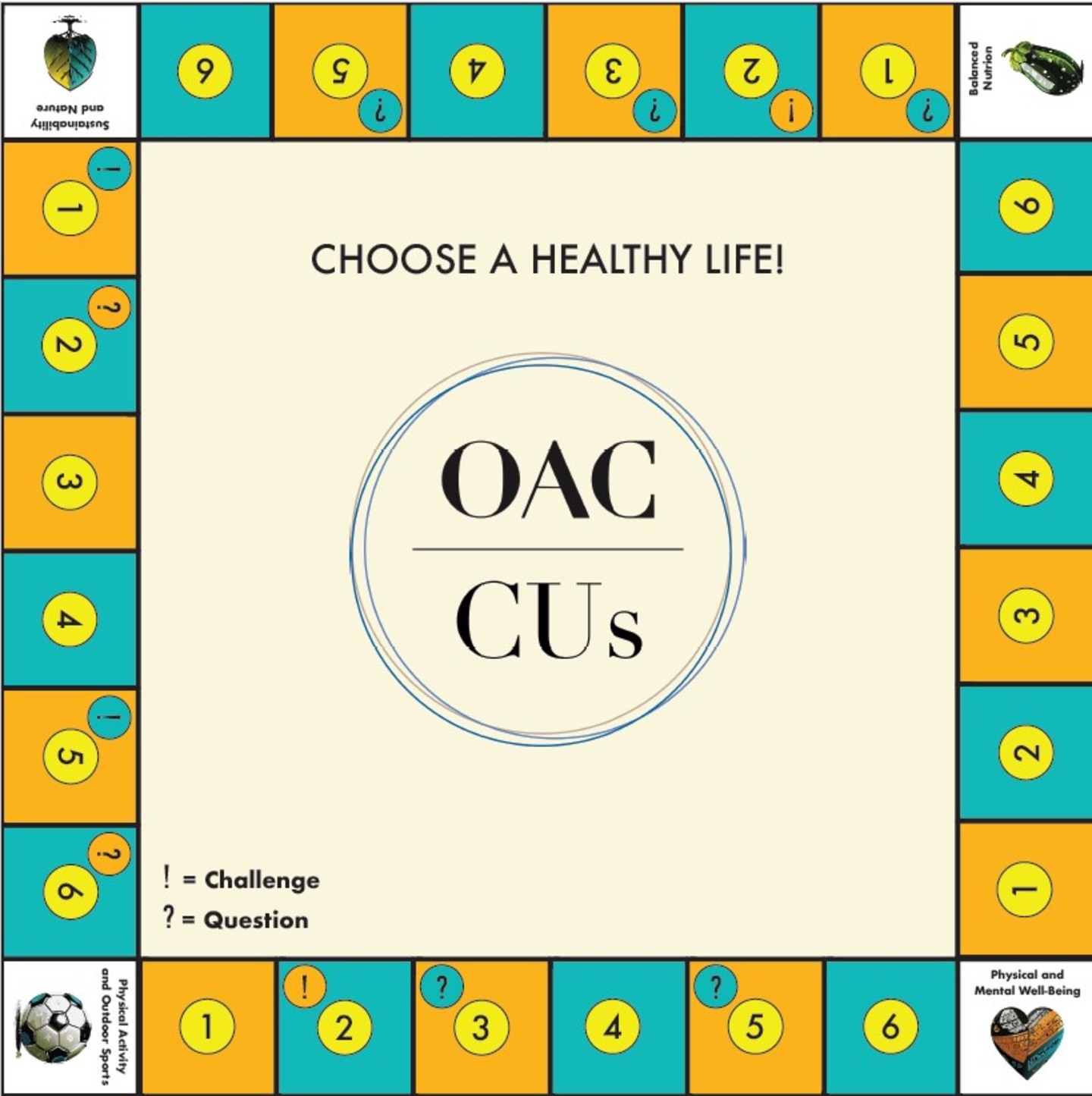Introduction
The OACCUs boardgame - gets your body moving!

Game Board Overview:
- The game board consists of four sides, each divided into six squares.
- Each corner of the board features an illustration representing each of the four OACCUs pillars. Each side of the board is associated with a specific pillar.
- The six squares (numbered 1-6) on each side are interspersed with a "?" (Question) or "!" (Challenge).
How to Play:
- Setup:
- Print the game board and all cards, cut and sort accordingly.
- Use coins, bottle caps, or anything else you find suitable as game pieces
- You will need a pair of dice to play
- Rolling the Dice:
- Players may start at any of the four corners of the board.
- Players roll two dice to determine how many squares to move forward on the board.
- The number rolled corresponds to the number of squares the player advances.
- Landing on a Square:
- If the player lands on a square marked with a "?" (Question) or "!" (Challenge), they must either answer a question or complete a challenge. The challenge or question is on the card that is drawn.
- If the player lands on a corner square featuring a pillar illustration, they roll the dice again and move accordingly.
- Answering Questions and Completing Challenges:
- If a player answers a question incorrectly or fails to complete a challenge, they are eliminated from the game.
- If a player answers a question incorrectly or fails to complete a challenge, they are eliminated from the game.
- Winning the Game:
- The last remaining player who successfully navigates the board by answering questions and completing challenges wins the game.
Additional Rules:
Players continue rolling and moving until they are eliminated or emerge victorious as the last player standing.
Produced by: Paula Tavares at the University of Coimbra.
Design by: Carl-Erik Engqvist at Umeå University
Produced by: Paula Tavares at the University of Coimbra.
Design by: Carl-Erik Engqvist at Umeå University
